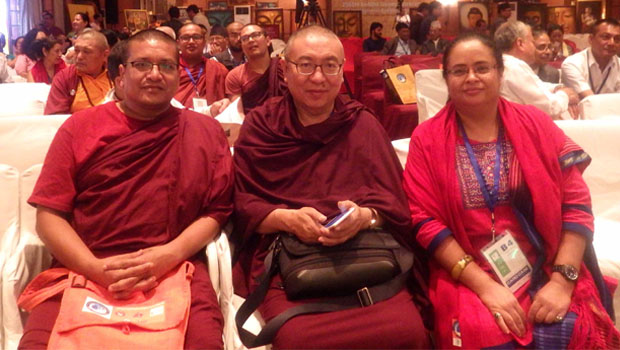The third International Buddhist Conference in Kathmandu on 19-20 May, followed by the 2560th Buddha Jayanti celebration in Lumbini concluded, with the central theme: Lumbini as the birthplace of Buddha, the fountain of Buddhism and world peace.
Its participants included venerable monks and respectable nuns, professors, educationist, cultural experts & archaeological, artists, research scientists, dignitaries, Buddhist scholars, devotees, enthusiasts from over 32 countries, and the government-level delegations from 28 states.
The conference was special in many ways. Based on the archaeological evidences, and historical facts, and relying on the scientific principles, the event reaffirmed Lumbini as the birthplace of Buddha, and origin of Buddhism and the fountain of world peace.
Presenting his research paper “New Archaeological Discoveries in Nepal’s Natal Landscape of the Buddha”, Professor Robin Coningham of UK’s Durham University concluded—based on the historical facts and their calibration with other contemporary archaeological evidence—that Buddha was born in Lumbini. He revealed that in 1896 General Khadka Shamsher and Dr. Anton Fuhrer had uncovered in Rumindei in the Terai a stone pillar with an inscription carved in early Brahmi script that read: “Beloved of the Gods, King Piyadasi (Ashoka) when 20 years consecrated came to worship saying here the Buddha Sakyamuni was born.” Belonging to the corpus erected by the Mauryan emperor Ashoka across South Asia, the pillar’s inscription confirmed the site as Lumbini, the birthplace of the Buddha.
Another research paper on the birthplace confirmation was presented by Professor Anil Shakya – Bhikshu ‘Sungandha’ – of Thailand’s Mahamakut Buddhist University. In proving the case, he highlighted the fact that the inscription engraved on the Lumbini pillar in 5 lines consists of 93 Brahmi characters, which includes: ‘HidabhagavamjatetiLumminigame: Lumbini village where the Buddha was born.’
The participants converged on the point of oneness of Buddha and Buddhism, and considered Lumbini to be the epicenter of world peace.
Besides, the conference provided an opportunity to many artists and sculptors of both Nepal and China to display their creations of Buddha in the grand conference hall of Soaltee Crown Plaza.
The conference concluded in Lumbini on 21st May with a 10-point Declaration, endorsing a plan to promote Lumbini as the centre of Buddhist faith.

